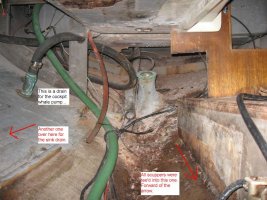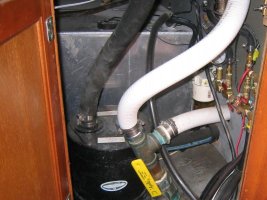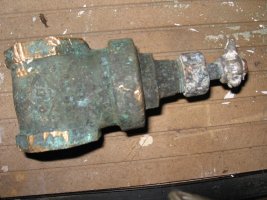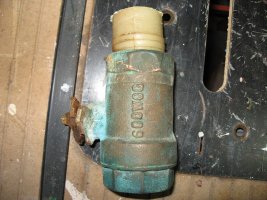I'm trying to clean up the hose runs and cockpit scuppers on the 35-2 in rehab and wondering where the hoses connect. The P.O had everything connected to 1.25" drain close to the keel just behind door that accesses under the cockpit.
Can you kind folks offer some clues as to how the 4 drains connect to one or more thruhulls? I have 3 thruhulls under the cockpit - two on the starboard side and just off centre - ( a little to port). I'm not sure if this is original or if there have been some modifications.
thanks again for your help/
jt
Can you kind folks offer some clues as to how the 4 drains connect to one or more thruhulls? I have 3 thruhulls under the cockpit - two on the starboard side and just off centre - ( a little to port). I'm not sure if this is original or if there have been some modifications.
thanks again for your help/
jt




 l” of a mess.
l” of a mess. By example and the work of the PO.
By example and the work of the PO.

